What Are Parasitic Wasps & How Can They Help Your Lawn?
The name ‘Parasitic Wasps’ is unnecessarily terrifying, because the truth is that the presence of these bugs around your home might be both an indicator of an outbreak of ...

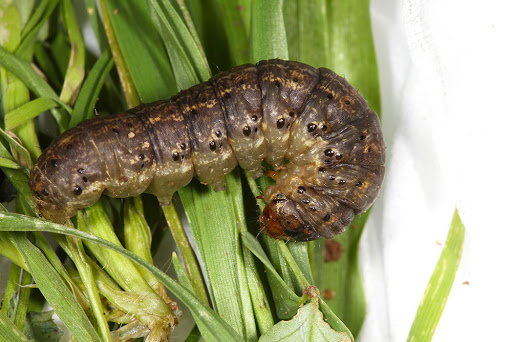 Cutworms are among the most common pests of Australian lawns, found in most states.
Cutworms are among the most common pests of Australian lawns, found in most states.
They’re the larval stage of several species of brown moths that fly at night, including the Bogong moth which is famous for its twice yearly long distance migration flights.
Many Cutworms hide in the soil, mulch or thatch during the day and come out at night to feed on grass blades and stems, which they cut at ground level, hence the name.
In this article, we explain how to identify Cutworms, when to look out for them and the best ways to control them without damaging your lawn.
We also recommend a range of products for managing Cutworms and keeping your lawn in top shape.
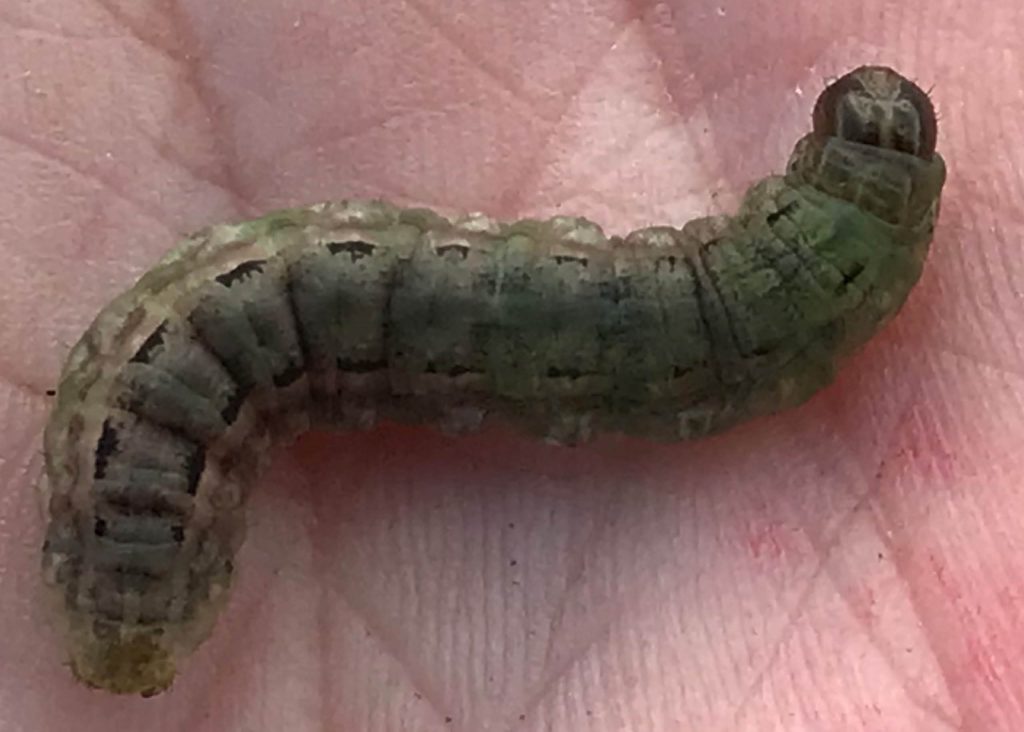 Mature Cutworms are plump, smooth caterpillars often with longitudinal lines and brown to black spots on their back and sides.
Mature Cutworms are plump, smooth caterpillars often with longitudinal lines and brown to black spots on their back and sides.
They vary in colour from dark grey to greenish brown or black and can be 1-2mm long at hatching but quickly grow to about 40mm.
Cutworm larvae pupate into a moth which is attracted to light and lays clusters of eggs at night in your lawn.
Resting moths fold their wings along their body.
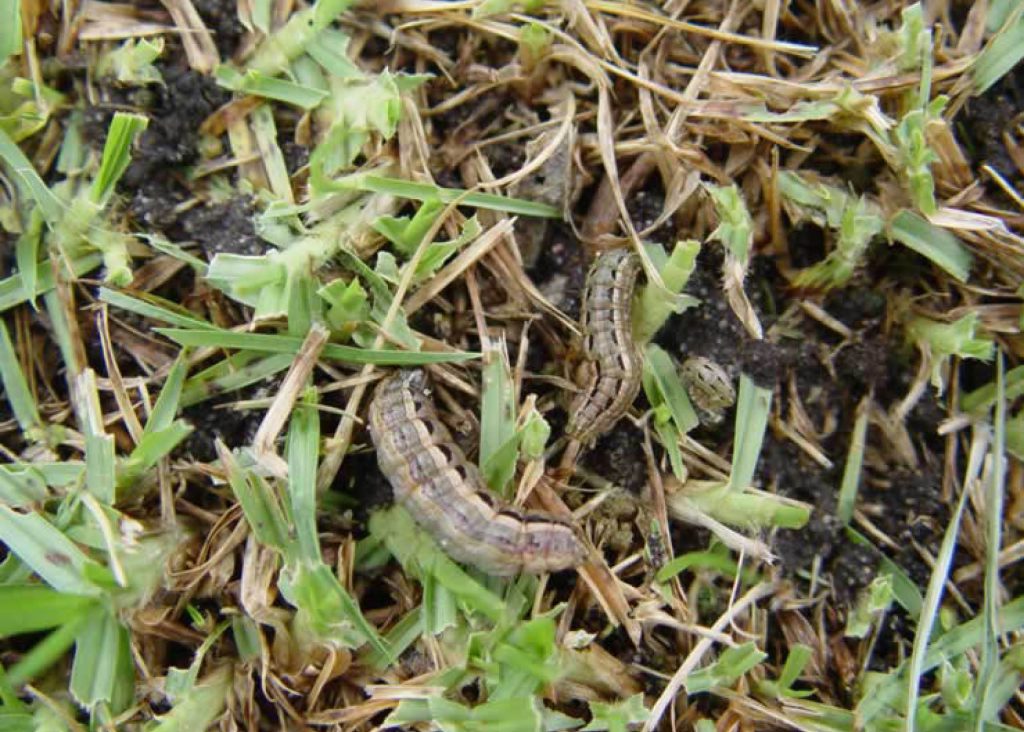 Regular monitoring for pests should be part of your lawn care schedule year-round.
Regular monitoring for pests should be part of your lawn care schedule year-round.
In the case of Cutworms, watch out for the presence of moths in spring and early summer.
Birds pecking at the ground can often be a sign that something is amiss.
Look out for insect-eating birds such as the Common Myna (also known as the Indian Myna), Magpies, Pied Currawongs and Butcher Birds which consume both Cutworm larvae and adult moths.
Signs of larval feeding damage appear as small yellow or brown patches and the grass may feel spongy underfoot.
There will often be a brown spot up to 50mm across with a hole in the middle where the Cutworms hide during the day.
These pests can be managed using either insecticide or a chemical-free method of control.
 Always wear the appropriate protective equipment – gloves, safety glasses etc… – and read the product label before using any insecticide.
Always wear the appropriate protective equipment – gloves, safety glasses etc… – and read the product label before using any insecticide.
Check whether the product is suitable for Cutworms and that it is safe for use on your grass type.
Look for products containing the active ingredients Bifenthrin or Chlorantraniliprole for long-term residual control.
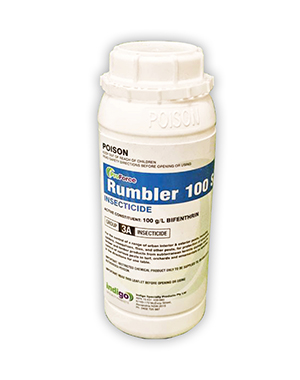
Indigo Rumbler 100SC 1L is a broad-spectrum insecticide registered for use against a range of insects, including Cutworms. It is suitable for use on Zoysia, Kikuyu, Couch and Buffalo grasses.
SHOP NOW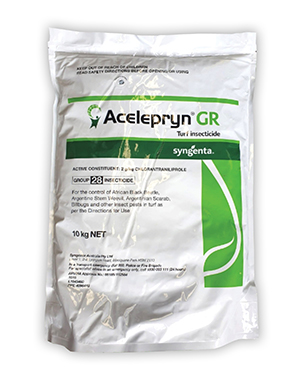
Acelepryn GR 10kg is a long lasting granular insecticide for the control of beetles and larvae, including Cutworms. It is suitable for Zoysia, Kikuyu, Couch and Buffalo grasses.
SHOP NOW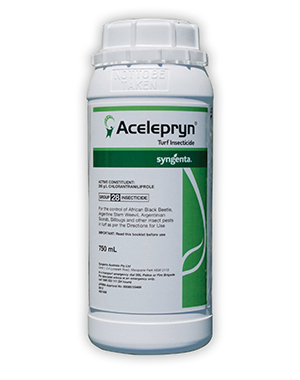
Acelepryn 750ml is a is a low environmental impact insecticide for the control of beetles and larvae, including Cutworms. It is suitable for Zoysia, Kikuyu, Couch and Buffalo grasses.
SHOP NOWBest results are obtained from treating the problem before pest numbers explode.
Plan to treat your lawn about 14-21 days after moth numbers peak.
Spray only in the early morning or at night to avoid killing Bees that forage in flowers during the day.
Some products must be watered in after application and can act as both a knockdown and a preventative treatment.
It will take a few days for many products to work.
Wait three days before using the soapy water flush test to see if it’s working and repeat treatment if necessary after a 10-14 days.
Poor lawn maintenance contributes to Cutworm problems from year to year.
Follow good mowing practices and dethatch and aerate regularly to help keep insects at a minimum.
Lawns mown too short are at greater risk of damage because they are already under stress.
 If you suspect Cutworms are chewing away at your lawn, an easy way to be sure is to spread a wet hessian bag – use a potato sack or buy hessian by the metre from some garden stores – over a patch of lawn.
If you suspect Cutworms are chewing away at your lawn, an easy way to be sure is to spread a wet hessian bag – use a potato sack or buy hessian by the metre from some garden stores – over a patch of lawn.
Leave the wet hessian bag overnight on the lawn and the grubs will attach themselves to the hessian, ready for disposal in the morning.
Where the lawn has died after the roots were nipped off, dig into the soil underneath to uncover the culprits.
Collect grubs, beetles and moths and feed them to your chickens, if you have any, or toss them onto a paved area for wild birds to eat.
You could also drown the Cutworms in a bucket of soapy water before putting them into a plastic bag and in the bin.
For more information about managing pests in your lawn, and to browse our range of lawncare products from leading brands, visit myhomeTURF’s online store.